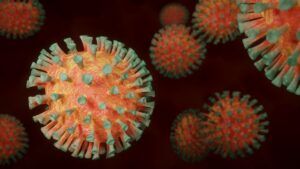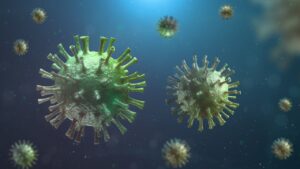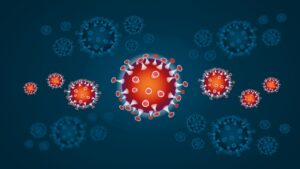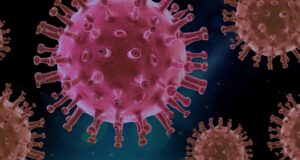Viruses
Viruses as a cause of disruption
 Viruses are involved in many bodily complaints. They are an underestimated threat on our planet.
Viruses are involved in many bodily complaints. They are an underestimated threat on our planet.
Viruses use our cells to multiply, thereby weakening the functions of these cells and our immune system.
Viruses program the DNA and RNA in our cells, mutate quite rapidly, and do not leave the nucleus of the cells themselves. If the cell nucleus is reprogrammed by the virus, the immune system can do nothing to combat the virus.
Hereditary latent illnesses can be activated by viruses.
 American scientists have currently registered approximately 2000 viruses, but they estimate that the registered number should be closer to 5000 virus types.
American scientists have currently registered approximately 2000 viruses, but they estimate that the registered number should be closer to 5000 virus types.
A significant portion of those viruses exist in tropical rain forests and in the cells of warm-blooded vertebrates.
The spread of viruses is furthered by international tourism.
Shifts in climates and displacements of potential host animals to new areas also play a role in  the spread of viruses.
the spread of viruses.
This explains why most deadly viruses have just been discovered and identified in the last 35 years. Some of these viruses previously existed in Africa, and have just arrived in the Western world, where occupants do not have antibodies against these new viruses.
Thus in 1999, 9 people died in one week in  Germany of the Crimean-Congo hemorrhagic fever virus.
Germany of the Crimean-Congo hemorrhagic fever virus.
Fighting viruses with nosodes and medicine does not lead to the desired result. Only materials produced by snakes and spiders are able to have an effect on the cellular nucleus.
In particular, the ultra-short chain and single segments are frequently the causes of chronic complaints in the body. These viruses were not traceable until recently.
 An effective method to fight non-identified viruses is an approach that uses a categorical system of 5 different virus phases.
An effective method to fight non-identified viruses is an approach that uses a categorical system of 5 different virus phases.
In a diagnostic test of microbiological infections completed by Dr. Schimmel, 5 virus phases were distinguished.
Phase 1 Critical virus situation
Phase 2 Long chains of infectious DNA
Phase 3 Short chains of infectious DNA
Phase 4 Ultra short chains of infectious DNA
Phase 5 Simple segments of DNA (viral nucleic acids)
All phases can easily move to another phase.